




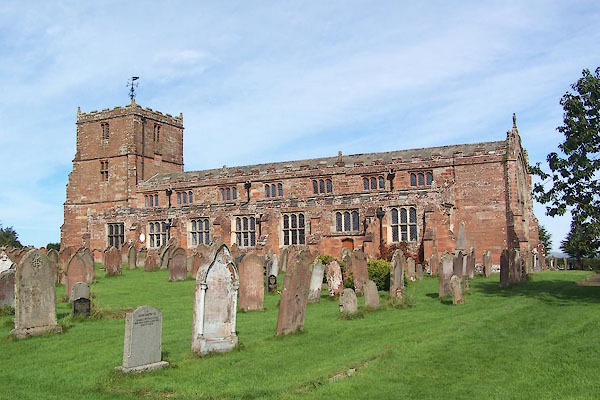
BMQ03.jpg (taken 15.9.2006)
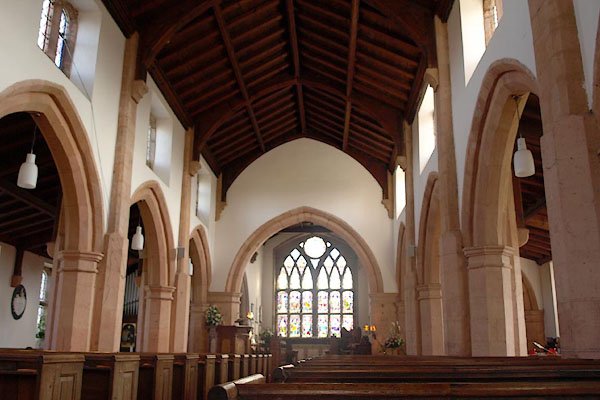
BSK31.jpg (taken 2.4.2010)
 goto source
goto sourcePage 188:- "..."
"In Arthuret parish was born and buried Archibald Armstrong, jester to James and Charles I. who was banished from court for speaking too freely of archbishop Laud's violent measure, which had exasperated the Scots by forcing the liturgy on them. Dr. Hugh Todd was rector of this parish. ..."
 goto source
goto sourceGentleman's Magazine 1819 part 1 p.507
From the Compendium of County History:- "In Arthuret church-yard was buried its native Archibald Armstrong, fool or jester to James I. and Charles I. 1672."
item:- mail, sanctity; World War I
Page 154:- "..."
"In Arthuret churchyard there is shown a broken cross, said to mark the grave of Archie Armstrong, the famous Court fool of James the First and Charles the First. James brought him south, from the Border, where he had early distinguished"
HP01p155.txt
Page 155:- "himself as a sheepstealer in Eskdale; and his impudence and invincible effrontery brought him a long period of success at Court. But at last he overreached himself, in his enmity to Archbishop Laud. On one occasion, saying grace at Whitehall, he exclaimed, "Great praise to God and little laud to the Devil," and all the Court sniggered; but when, in 1637, he met Laud at a time when the Scots were rising against the Archbishop's attempts at dictation in religious matters, and"
HP01p156.txt
Page 156:- "asked, "Wha's fool the noo?" the jester's licence had grown beyond endurance, and he was dismissed. The wonder is that like Jack Point, in the Yeoman of the Guard, recounting his experience in the service of the Archbishop of Canterbury, under somewhat similar conditions, he was not "set in the stocks as a scurrilous knave." He lived many years longer, and earned the reputation of an extremely usurious lender of money, to whom no sharp practices came amiss. The cross shown as marking his resting-place is really a portion of an ancient Scandinavian monument."
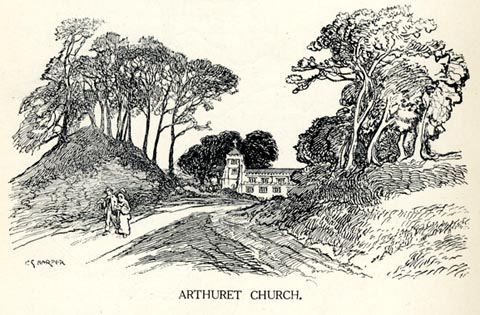 click to enlarge
click to enlargeHP0126.jpg
"ARTHURET CHURCH."
"Another character, very notorious in his day, lies in the churchyard: Sir James Graham of Netherby, who was Home Secretary in 1844, when the correspondence of Mazzini and other political refugees was opened at the General Post Office by his direction, and read. Graham received his orders from the Earl of Aberdeen, Minister for Foreign Affairs, but it was Graham himself upon whom the whole of the public obloquy fell, and he remarked, in the true spirit of prophecy, that all else he had done would be forgotten, and he would be remembered only by this wretched incident. It surely is a pitiful thing and a real tragedy of the public service that"
HP01p157.txt
Page 157:- "an honourable gentleman who in private life would have scorned to do anything mean should go down in history as the man who violated the sanctity of private correspondence. But to do that was, in the period of the Great War 1914-18 a matter of course: and it is done by the General Post Office even now. The shade of Sir James Graham must smile cynically; or, if you will, mournfully."
item:- JandMN : 1055.28
Image © see bottom of page
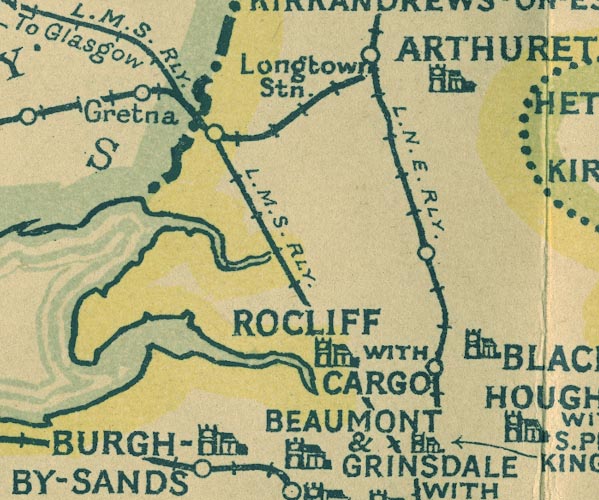
NUR1NY36.jpg
"ARTHURET"
item:- JandMN : 27
Image © see bottom of page
 notes about bells
notes about bells stained glass
stained glass hatchments
hatchmentsplacename:- Church of St Michael
courtesy of English Heritage
"CHURCH OF ST MICHAEL / / / ARTHURET / CARLISLE / CUMBRIA / II[star] / 78088 / NY3793967666"
courtesy of English Heritage
"Church. Dated 1609 over west entrance, built by national subscription, replacing medieval church; tower completed c1700, restored 1868. Red and yellow dressed sandstone, graduated green slate roofs. 3-storey tower/porch, 7-bay nave with north and south aisles, one-bay chancel. Tower: plank door in pointed arch, 2-light mullioned openings with louvred vents; small, chamfered-surround stair windows to left; stepped angle buttresses, string courses, battlemented parapet and corner pinnacles; weather vane with cut lettering ST MICHAEL'S. Aisles have triple cross-mullioned windows; smaller mullioned clerestory windows above. Aisles and nave with battlemented parapets and finials, stepped buttresses between aisle windows. Chancel has no side windows; replacement east window of 1868 (original now as folly at Whoof House, Aglionby) has oval at the apex of the arch and inter- secting tracery, stained glass by Scott of Carlisle. Interior; 7-bay arcade of pointed arches; C17 bowl and stem font; C15 heart brass; heraldic hatchments on 3 wooden panels and marble wall plaques, all to members of the Graham family 1657- C20. Furnishing and fittings are early C20. [bullet] Transactions Cumberland & Westmorland Antiquarian &Archaeological Society, new series, vol lxvi, pp. 179-189."
courtesy of English Heritage
"CHURCHYARD WALL EAST OF CHURCH OF ST MICHAEL / / / ARTHURET / CARLISLE / CUMBRIA / II / 78089 / NY3796767651"
courtesy of English Heritage
"Churchyard wall. Mid C19. Red sandstone rubble. East wall of churchyard facing road. Waist-height wall with rounded coping. 2 gates with squared piers, entrance left with scrolled wrought iron lamp overthrow and to right entrance, cast iron standard lamp on one of the gate piers. Listed partly for G.V. with the Church."
courtesy of English Heritage
"CHURCHYARD CROSS WEST OF CHURCH OF ST MICHAEL / / / ARTHURET / CARLISLE / CUMBRIA / II[star] / 78090 / NY3788967655"
courtesy of English Heritage
"Churchyard cross. C12 or C13. Carved red sandstone. Squared socket stone, tapering shaft with incised cross decoration and wheel head cross supported by C19 iron clamp. See W.S. Calverley, Early Sculptured Crosses in the Diocese of Carlisle, 1899 pp. 8-10."
 memorials
memorialsitem:- cross
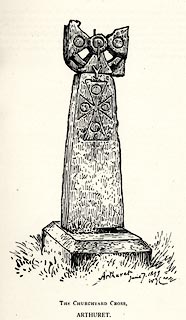 click to enlarge
click to enlargeCV1005.jpg
Sketch by W G Collingwood.
item:- JandMN : 190
Image © see bottom of page
item:- cross
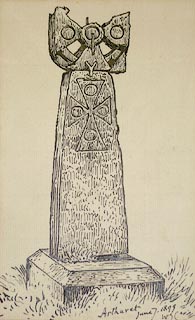 click to enlarge
click to enlargePR0813.jpg
Sketch of a cross, its upper arm missing. The wheel cross head is decorated with pierced work and bosses to both the centre and each lateral arm; the upper part of the shaft bears an incised Maltese cross.
Drawn to illustrate Notes on the Early Sculptured Crosses, Shrines and Monuments in the Present Diocese of Carlisle, by Rev William Slater Calverley, published by T Wilson, Kendal 1899; opposite p.8.
inscribed & dated &initialled at bottom right:- "Arthuret June 7 1899 WGC"
item:- Tullie House Museum : 1902.18.7
Image © Tullie House Museum
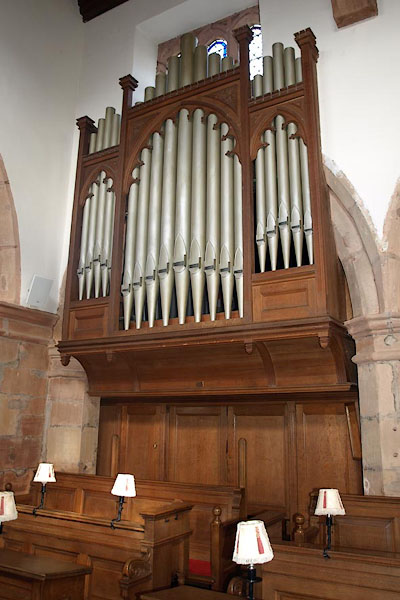
BSK34.jpg Organ made by Binns, Burnley, 1896.
(taken 15.9.2006)
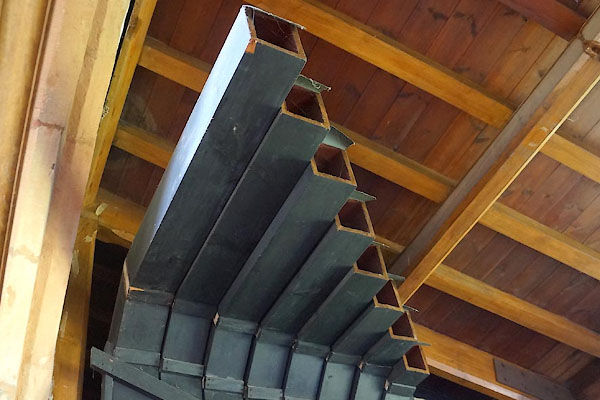
CDS22.jpg Organ, bass pipes.
(taken 23.8.2015)
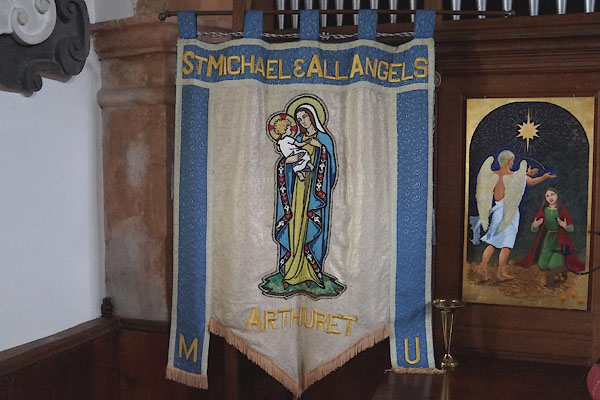
CBU79.jpg Mothers Union banner.
(taken 2.10.2014)
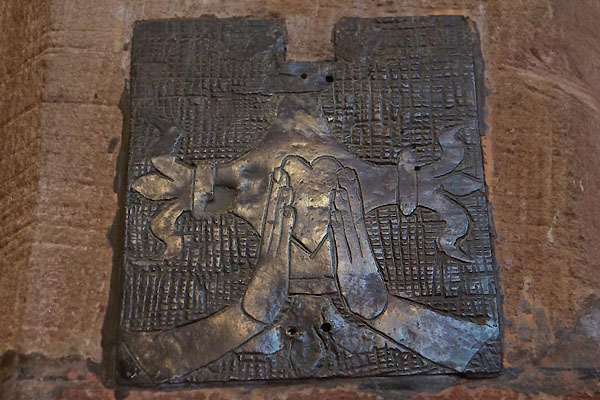
CBU80.jpg The .Crusader Heart Brass, 14/15th century.
(taken 2.10.2014)
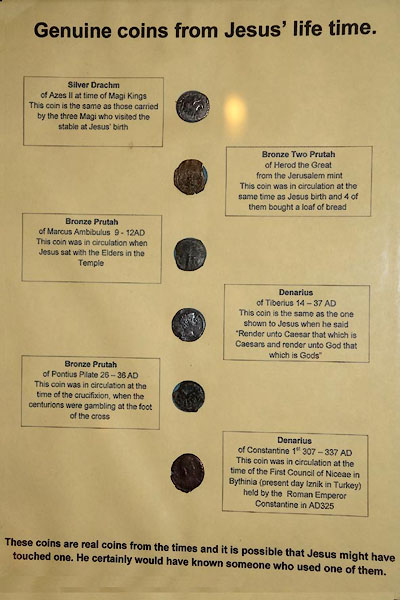
CBU81.jpg Coins.
(taken 2.10.2014)
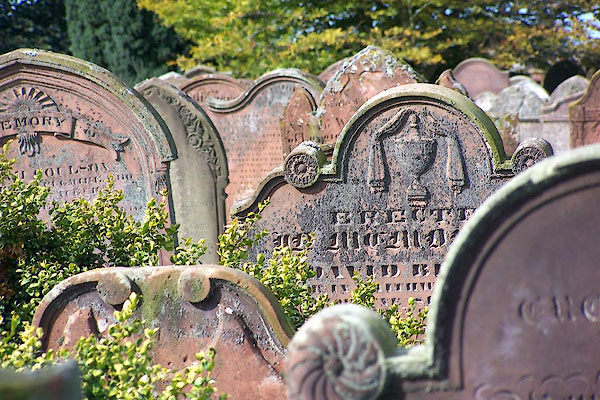
BMQ04.jpg Gravestones, sandstone.
(taken 15.9.2006)
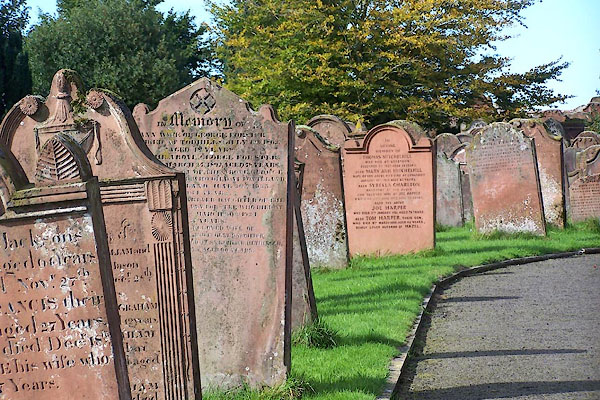
BMQ05.jpg Gravestones, sandstone.
(taken 15.9.2006)
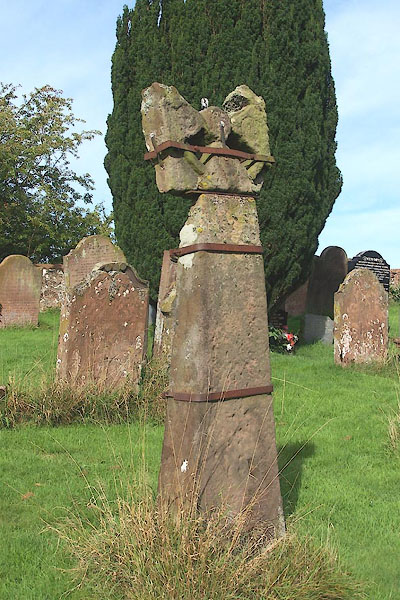
BMQ07.jpg Wheel headed cross
(taken 15.9.2006)
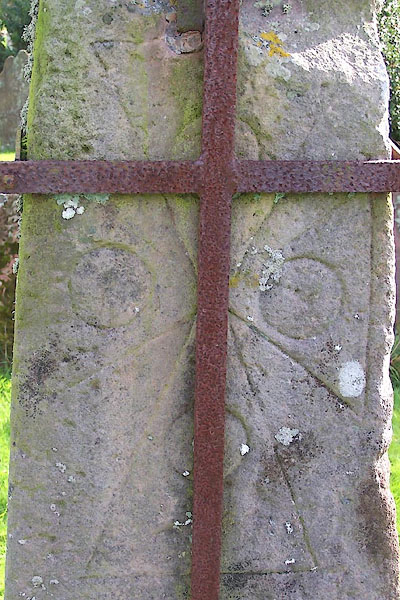
BMQ08.jpg Wheel headed cross
(taken 15.9.2006)
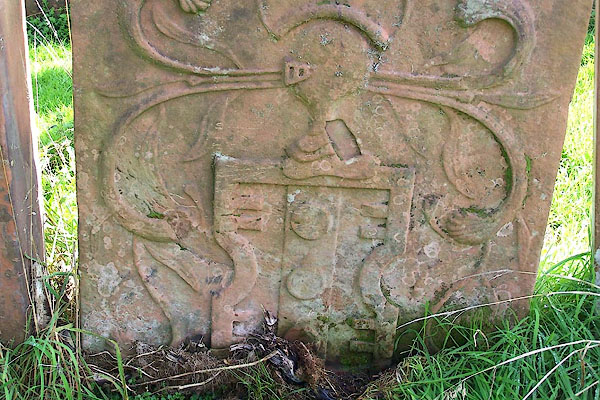
BMQ09.jpg Gravestone, coat of arms, William Baxter, d.1792?
(taken 15.9.2006)
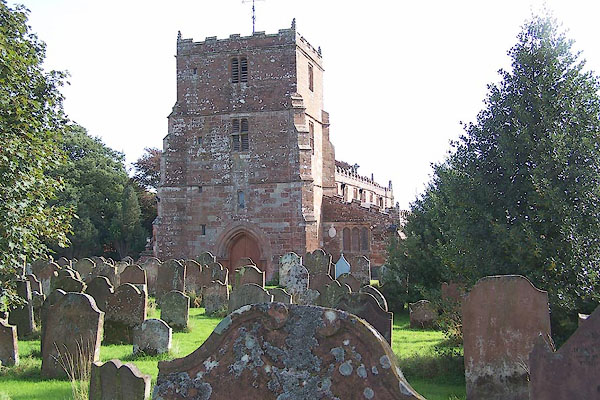
BMQ06.jpg (taken 15.9.2006)

BQO38.jpg Weathervane in an east wind:-
"ST. MICHAEL'S" (taken 15.9.2006)
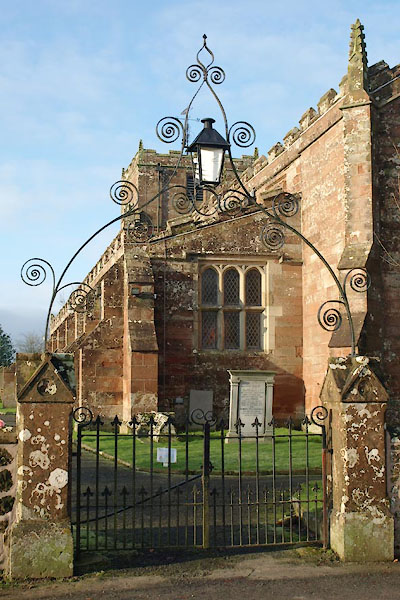
BXU65.jpg Gate.
(taken 29.1.2013)
: Armstrong, Archie
